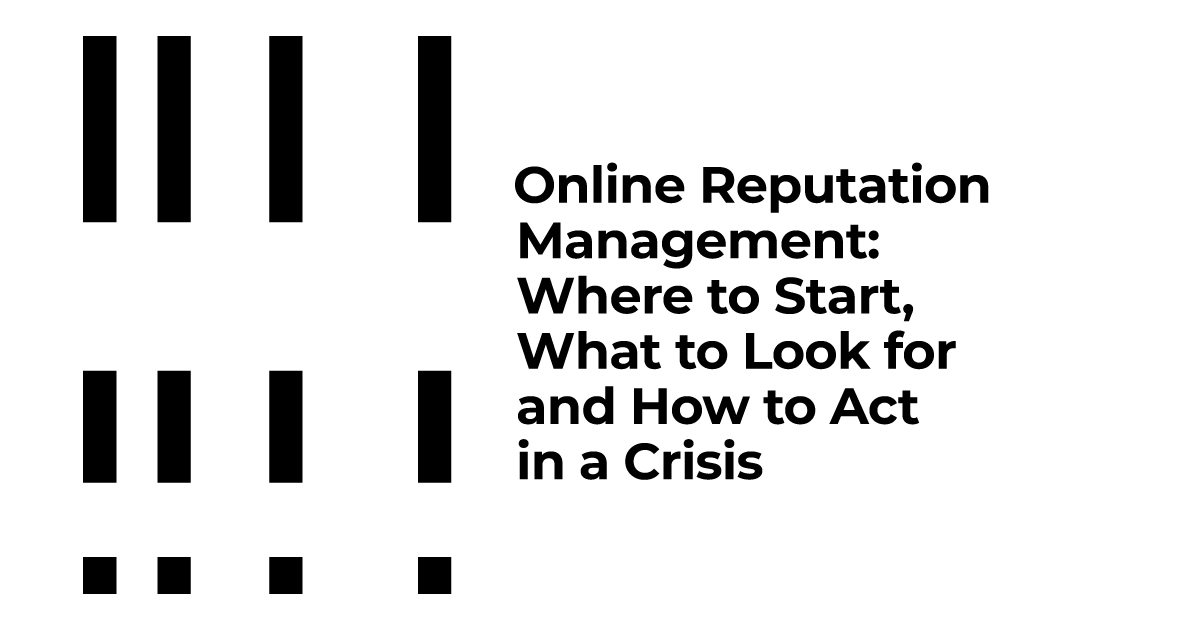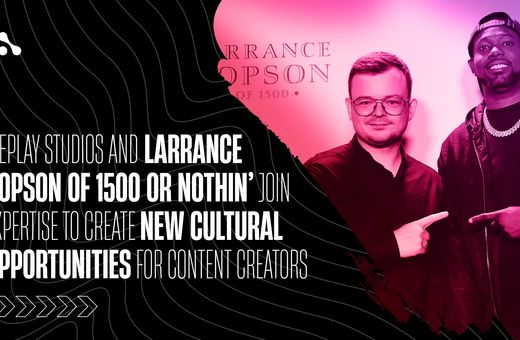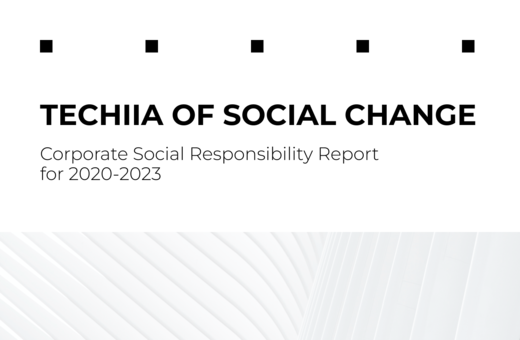 , the Chief Public Engagement Officer of TECHIIA holding, talks about the Online Reputation Management capabilities and how it helps prevent reputational crises.
, the Chief Public Engagement Officer of TECHIIA holding, talks about the Online Reputation Management capabilities and how it helps prevent reputational crises.
According to the American agency Reputation X, of people search for information beyond Google’s first page. 65% of users trust the reviews provided by the search engine. 60% left the idea of using the company's services after negative comments and articles.
So, what a person reads about you or your company on the first page of SERP (Search Engine Results Pages) will automatically affect their perception and the formation of trust between you.
To fans of privacy, I will say the obvious thing. The bigger the company, the more often it is googled for "something to read". People try to understand your expertise and find arguments that working with you is safe. The less information in the search engine, the greater the anxiety. And your enemies have a great opportunity to put a "dirty coat" on you in the form of custom materials, which Google will later show as information about you.
What to do with it? The classic move - instead of treating the disease, it is better to prevent it and "take vitamins". Let's talk about it.
Let’s Define The Terms
In order not to get confused, let me tell you about the differences in approaches. Online Reputation Management (ORM) is, well, online reputation management. Search Engine Reputation Management or SERM is quite similar but used mainly in crisis situations.
ORM should be used as early as possible if you are looking to build a company's or individual's reputation, build trust, a network of contacts. And then work on your online reputation constantly. This is prevention. After all, nothing is perfect, as soon as you make a mistake, Google will immediately tell you about it. Therefore, at the time of the crisis, there should be at least something good, that can be brought to the top of the search with special tools.
Collecting Incoming Data
Learn the methodical part. Google's algorithms are not public. However, the system itself publishes manuals every six months on how to help the search engine better recognize the content and promote it for search engines.
Analyze what Google and Yandex know about the company or person you are building the image of. Although Yandex is banned for use in Ukraine, it still collects information. Anyone who analyzes the data about you will most likely ask Yandex via VPN.
Choose keywords that your company or person can search for, and measure your search results.
You should not take very large categories. The wider they are, the higher the competition and the more expensive the optimization. For example, many TECHIIA companies are involved in esports, but the "esports'' keyword would be very costly for us, this is an overly broad notion. But you should not narrow it too much, because the frequency of niche requests may be insufficient. There are many tools to help in this process. Here are just a few of them:
- ahrefs.com
- serpstat.com
- ru.semrush.com
The will show you which ones are in demand, the will find technical errors on your site that are interfering with search engine rankings, help you collect query statistics, and more useful information.
Use keywords and tools such as LOOQME, YouScan, as well as , , and others for analysis. The analysis will help to understand how many resources competitors have spent on building a reputation in the information field, what is their strategy, tactics, and strengths.
Implementing Integrated Communications
If you are a young company with a clean information field, you should form your communication strategy based on your strong sides and expertise.
The strategy should take into account how much time, human and financial resources the company is willing to invest in building a reputation and for what period it wants to achieve certain indicators. Such goals must be realistic. If it is building a person's image, it is necessary that the person is an expert in their field and ready to speak in public. If we’re talking about the company's reputation then it should have something interesting for the audience.
When you define the goals of communication, messages, and expertise, it is necessary to determine points of how your business or a particular person can be useful to the audience. Google search results are a demonstration of your "footprints" in a public field in the form of text, video, and images. And to generate such content, you need activities that include a company name or a person's name.
Your content plan is based on an overall communication strategy and is integral. While you think that digital marketing is not part of PR, someone is currently gaining a competitive advantage over you by using integrated communication and more tools.
Creating Content and Its Sources
All the activities of your company, product, or person can be converted into content for Google search results. These are the posts in the media, photos, and videos from public speeches. If you build a person's reputation as an expert, make sure the communications team has a writer or journalist who will generate content together with the expert.
Google loves everything that meets the criteria of E-A-T: expertise, authoritativeness, trustworthiness. Following them is not as easy as it seems.
Expert text is written from scratch. It reflects the opinion and deep understanding of the topic by an author who is an expert in this field. It is good if there are comments from experts who understand the subject.
The authoritative text is made by references to primary sources such as researches, statements of the recognized world or national experts.
As for the trustworthiness, Google perceives the text published on the visited sites with a good reputation, responses, and comments as reliable. Readers of our media do not have a habit of leaving an opinion under the article. Most often, they repost it on social networks and add their comments.
The main thing is that the creation and distribution of content come before the technology, not vice versa.
Another thing worth mentioning is that Google itself raises your and your content’s rating if there’s a Wikipedia page about you with proper keywords. But keep in mind that the resource has its own culture and community, it's not so easy to get there. To do this, a person must have sufficient professional achievements.
Also think about what events your person will take part in, on what topic they will share their expertise with the public, etc.
Taking Into Account the Nuances of Native Projects
It happens that the information field has no info about you, and you need to get search results quickly. In this case, I advise you to start native projects with reputable media, where your audience is. Then the name of your company will be on the list of famous ones, as well as the person will be right next to well-recognized experts.
Here Are Some Points to Take Into Account When Making a Joint Project With The Media
1. By default, editors put no-follow links in the article. In this case, search engines will not “see” the source by that link. This is understandable as this may affect their website rating. If you see no-follow in the code, it means that the links are closed for search engines.
Therefore, you definitely should ask to put do-follow links to your website. This will let the search engine should go and check your website by that link.
2. In order for the partner article to be indexed by the name of the person who is the main character of that article, it is necessary to correctly create the Meta Title, Meta Description, and the Header (H1).
The Meta Title is the name of the article. This is a phrase that Google will show on the search page, among others. The Meta Description is a brief explanation of the text. H1 is the title of the article. Everywhere you have to specify a person's name, company, or product name, depending on the task.
3. Publications should include quotes not only from your company's specialists but also from other market players, preferably those already known to your audience. The task is to raise the authoritativeness of the text and make it clear to the search engine that this text and speakers are important for the audience.
4. One publication should contain no more than three do-follow links, but preferably only one. More links in the article are a bad sign for Google.
5. Three average articles in a native project are better than one longread. After all, three different links will lead to your resource. And the native project will cost less in bulk.
Separating Communication Channels
Own channels, partner channels, and paid media are all channels of information distribution, which will definitely be included in the search results by the name of the company or person.
Our task is to make each site valuable for its audience. For example, LinkedIn and Facebook are for B2B clients and potential candidates, Instagram forms the employer's brand, and Twitter is aimed at foreign media journalists. Accordingly, it is necessary to format the content for each channel.
However, you need to think about what kind of content you believe the stakeholders should see first.
Forming Google’s first page
Recommendations for the company and the individual vary. Here is a short list of resources where the information about the person and the company should be posted.
|
For a person |
For a company |
|
A site that tells about a person. Perhaps the "Team" section of the company's website. Having a quality photo is extremely important. A video would be even more beneficial. |
The company's website should contain comprehensive information about its activity. |
|
Wikipedia page |
Google My Business. It needs to be maintained and updated all the time. |
|
LinkedIn page |
LinkedIn page |
|
Facebook page |
Facebook page |
|
Twitter page |
Twitter page |
|
Dossier on resource 1 |
YouTube channel |
|
Dossier on resource 2 |
Wikipedia page |
|
Dossier on resource 3 |
Profile resource 1 |
|
A column on resource 1 |
Profile resource 2 |
|
A column on resource 2 |
Page on the profile association website |
|
Reference to a speech at the event X |
Media links 1 |
|
Expert comment in the publication |
Media links 2 |
In order to properly choose the sites that I have marked in the table as resource 1, resource 2, and resource 3, you need to check the following indicators:
attendance;
reputation;
the presence of your company profile or the manager’s profile for future relinking.
Working With Feedbacks
Feedbacks can be about your product on the marketplaces, and about your company as an employer. Think about who will monitor and respond to consumer feedback and competitors’ attacks.
Often businesses hire agencies for a rapid reaction using instructions or even scripts to respond quickly to feedback. Because the faster the reaction to a negative response, the less impact it will have.
Bringing Influencers
Influencers help generate traffic to your resources, as well as raise them in search engine rankings. Here are a couple of life hacks on how to work with influencers in order to improve search results:
For bringing traffic to your site fast it is best to use stories. In 24 hours you will get decent coverage and people who will swipe to your site.
If you need a long-lasting solution, you should use posts. You will not insert an active link in the text of the Instagram post, but it is possible to explain your message in more detail.
YouTube is the most long-lasting solution. The link under the video generates traffic for a long time, and if the video goes to the recommended, it will get a new life. Such content is more difficult, more expensive, and takes longer to produce. But if you are not in a hurry, this option may be on point for you.
It is good to involve Instagram and Facebook microbloggers in boosting local promotions and events.
Adapting to a Crisis Situation
A wildfire, for example, will gain more views on news resources than on the news that it has been eliminated. Therefore, the closer the fact of eliminating the fire to the start of that fire, the better for communications. In order for the fire to be extinguished quickly, the info field must be prepared in advance. The reaction algorithm should be developed and the response group created: lawyer + financier + security service + HR. Configurations can be different. It is during the crisis that you will need SERM.
The analysis of the digital environment in a crisis is different from the analysis in general. First of all, it is necessary to find out what caused the crisis: intentional external actions and extraordinary events or actions of employees inside the company.
Signs of a deliberate crisis are the posting of negative info about a company or a person on resources that do not adhere to journalistic ethics. For example, "toilet tanks" monitor the media for scandal, do not check the authenticity, can put bias news for commercial reasons. In contrast, news outlets usually seek comments from all parties involved. It is important for them that the information does not turn out to be fake, and has specific facts to avoid lawsuits.
If you have already fallen into the trap of dishonest media, my recommendation is to state your position on the unwillingness to pay for the removal of news or the publication of counter statements very clearly. Fake media can terrorize your company for several months until they switch to someone less strong.
Applying SERM Tools
Firstly, monitor where your crisis is already being discussed. Publish your statement in that information channel. If there is information in the media about a crisis situation without your comment, do your best to have it there as well. If the crisis is overcome, ask the media to publish the new material instead of updating existing ones.
Secondly, when the crisis is over, continue to generate positive content to push the “bad” news lower in search rankings. You can use link-building platforms for that. To raise the article you need in Google by keywords, you need to generate unique text (at least 70% uniqueness) and use the resources listed below to raise it.
I recommend the following:
- gogetlinks.net
- prposting.com
- whitepress.com.ua
If you have a niche product, take a look at the PBN-network (Private Blog Network, 5-100 sites for link-building)
Remember To Work Consistently
Sometimes I hear the opinion that PR is free advertising. Or the belief that SERM is a magic pill. Unfortunately, both the first and the second are a mistake.
Communication is a daily job that involves searching for new solutions constantly, establishing friendly relationships with journalists, and correctly sharing the necessary messages with the public.
If you do not do all this, do not expect that your news will be gladly published in the media and will be discussed by influencers. Unless you are Google, Uber, Apple, Tesla. But they also build their reputation every day. And we should do it as well.
Original article on


